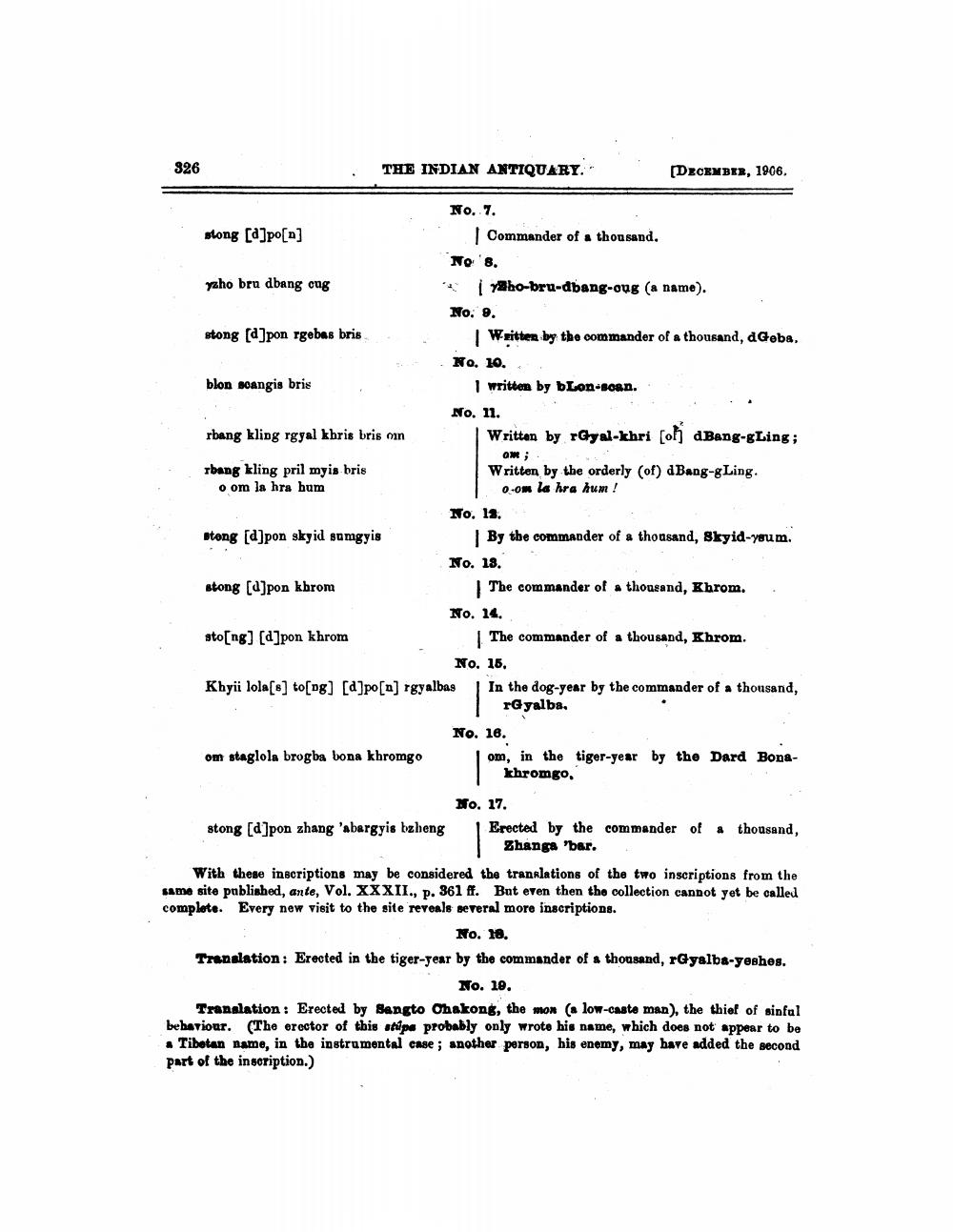________________
326
THE INDIAN ANTIQUARY.
[DECEMBER, 1906.
slong [2]po[n]
yho bru dbang cug
No. 7.
Commander of thousand. No's.
Yho-bru-dbang-oug (a name). No, e.
Weitten by the commander of a thousand, a Greba, Ko. 10.
1 written by bLon-scan. No. 1.
Written by ryal-khri [oh dBang-gLing;
stong (2]pon rgebas bris
blon soangis bris
rbang kling rgyal khris bris on
rbang kling pril myis bris
Written by the orderly (of) dBang-gLing. o om la hra bum
o-om la hra hum!
No. 13. stong [2]pon skyid sumgyis
By the commander of a thousand, Skyid-yeum.
No. 18. stong (2]pon kbrom
The commander of a thousand, Khrom. .
No. 14. sto[ng] [4]pon khrom
The commander of a thousand, Khrom.
No. 16. Khyii lola(s) to[ng] [2]po[n] rgyalbas In the dog-year by the commander of a thousand,
rGyalba,
No. 16. om staglola brogba bona khromgo om, in the tiger-year by the Dard Bona
khromgo.
No. 17. stong [d]pon zhang 'abargyis bzheng | Erected by the commander of a thousand,
1 Zhanga 'bar. With these inscriptions may be considered the translations of the two inscriptions from the same site published, ante, Vol. XXXII., p. 361 ff. But even then the collection cannot yet be called complote. Every new visit to the site reveals several more inscriptions.
No. 18. Translation: Erected in the tiger-year by the commander of a thousand, rGyalba-yeshes.
No. 19. Translation : Erected by Sangto Chakong, the mox ( low-caste man), the thief of sinful behaviour. (The erector of this stupe probably only wrote his name, which does not appear to be
Tibetan name, in the instrumental case; another person, his enemy, may have added the second part of the inscription.)




